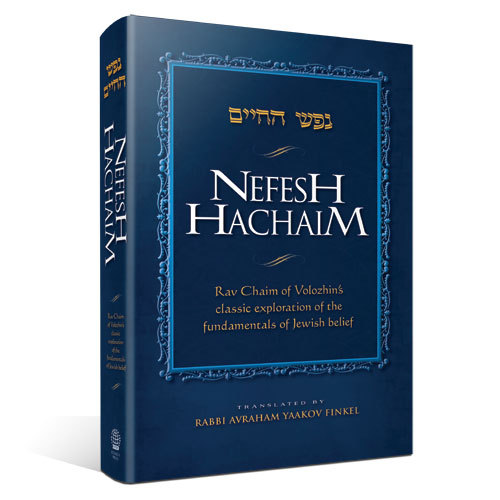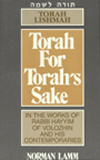Rav Chaim of Volozhin
The Kosher Bookworm
By Alan Jay Gerber
Issue of November 13 2009/ 26 Cheshvan 5770The beginning of the 19th century witnessed many historical events that were to foreshadow much of the next two centuries. With American independence secure under President Thomas Jefferson and the French revolution morphing into a dictatorship of Napoleonic proportions, the Jewish world was to witness institutional changes that would redefine our communal existence.First and foremost to change at this point in time, and not noted by most secular Jewish historians, was the educational structure of our yeshivos. In response to a decline in the quality and quantity of Jewish educational institutions in the latter part of the 18th century, Rav Chaim of Volozhin set into motion the founding of a yeshiva in 1802 that was to revolutionize the very definition of the word “yeshiva.”
The founding of the Yeshiva of Volozhin in Lithuania immediately struck a responsive chord among a large number of young Jewish scholars who flocked to Volozhin, establishing that venue as a center for quality Talmudic learning in that era. Rav Chaim followed in the footsteps of the Vilna Gaon, popularizing the Gaon’s method of deep and razor-sharp analysis of the Gemara text and a strict adherence to intellectual integrity.
This method was to set the pace for traditional Jewish education. Thus, Jewish history recognized Rav Chaim as the father of the yeshiva movement, an accolade that is recognized to this day as his rightful legacy and place in Jewish history.
But organizational talent was not to be his sole legacy, which also included his extensive writings and teachings that survive in the literature of our people.
Twenty years ago, then-Yeshiva University president, Rabbi Dr. Norman Lamm authored a study of Rav Chaim’s intellectual legacy titled, “Torah Lishmah: Torah For Torah’s Sake” [Ktav, 1989]. Within this work can be found a detailed study of Rav Chaim’s life’s work, a biography with 179 detailed footnotes, and an analysis of Rav Chaim’s view of the study of Torah.
This is further expanded upon with a detailed analysis of what defines the concept of Torah Lishmah (for its own sake) and a study of Torah Shelo Lishmah (not for its own sake), as well as a section dealing with scholarship and piety, topics that have a very contemporary ring.
The excursus section goes into the relationships between Rav Chaim and his ideology and the then-growing Chassidic movement.
Furthermore, Rabbi Lamm details the study of Rav Chaim’s magnum opus, “Nefesh Hachaim,” in terms of both content and its impact upon the Jewish community. Since 1989 no other work has come close to responding to Rabbi Lamm’s in highlighting the role that Rav Chaim played in setting what was to prove to be the recognized method of study for mainstream traditional Judaism. The only thing missing was a full and comprehensive English translation of Rav Chaim’s works.
With the above review serving as prologue, I am happy to note the recent publication of the first-ever English translation of “Nefesh Hachaim” [Judaica Press, 2009] by Rabbi Avraham Yaakov Finkel. A survivor of Bergen-Belsen, Rabbi Finkel has devoted his life to translating some of the most challenging classics of Jewish scholarship, among them the Ain Yaakov, Avos D’Rebbi Nosson, and the Kuzari.
Rabbi Finkel’s translation of Nefesh Hachaim is organized into four parts totaling 88 chapters dealing, in clear and understandable English, with just about every Jewish theological issue. The work answers, in both eloquent and effective terms, some of the most intricate questions of our religious faith.
Rabbi Finkel, in his introduction, notes that while this work represents a total translation, there is one omission. “The sections of Nefesh Hachaim dealing with Kabbalistic subjects have been omitted,” Rabbi Finkel writes, “as the subject matter is not suitable for translation.”
It should be further noted that while this work is fully footnoted and indexed most competently, the omission of any reference to Rabbi Lamm’s pioneering work is most unfortunate, and in my opinion, inexcusable in the extreme.
Taken together, both works make for a long overdue recognition of Rav Chaim’s legacy, and that would be just fine if that was all we had to consider in this essay.
However, I am compelled to end this piece with the following sharp observation: A recognition by Rabbi Finkel of Rabbi Lamm’s work would have given greater intellectual credibility to his. Hopefully, in the next printing, recognition will be given to this omission.

 61.0°,
Mostly Cloudy
61.0°,
Mostly Cloudy 







